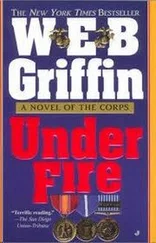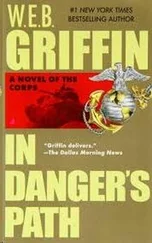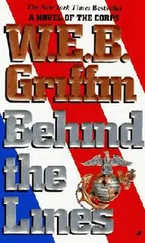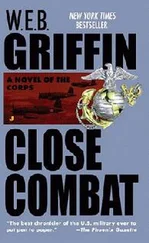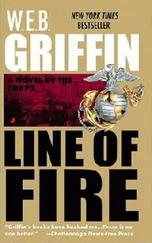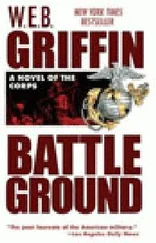W.e.b. Griffin - The Corps II - CALL TO ARMS
Здесь есть возможность читать онлайн «W.e.b. Griffin - The Corps II - CALL TO ARMS» весь текст электронной книги совершенно бесплатно (целиком полную версию без сокращений). В некоторых случаях можно слушать аудио, скачать через торрент в формате fb2 и присутствует краткое содержание. Жанр: prose_military, на английском языке. Описание произведения, (предисловие) а так же отзывы посетителей доступны на портале библиотеки ЛибКат.
- Название:The Corps II - CALL TO ARMS
- Автор:
- Жанр:
- Год:неизвестен
- ISBN:нет данных
- Рейтинг книги:4 / 5. Голосов: 1
-
Избранное:Добавить в избранное
- Отзывы:
-
Ваша оценка:
- 80
- 1
- 2
- 3
- 4
- 5
The Corps II - CALL TO ARMS: краткое содержание, описание и аннотация
Предлагаем к чтению аннотацию, описание, краткое содержание или предисловие (зависит от того, что написал сам автор книги «The Corps II - CALL TO ARMS»). Если вы не нашли необходимую информацию о книге — напишите в комментариях, мы постараемся отыскать её.
The Corps II - CALL TO ARMS — читать онлайн бесплатно полную книгу (весь текст) целиком
Ниже представлен текст книги, разбитый по страницам. Система сохранения места последней прочитанной страницы, позволяет с удобством читать онлайн бесплатно книгу «The Corps II - CALL TO ARMS», без необходимости каждый раз заново искать на чём Вы остановились. Поставьте закладку, и сможете в любой момент перейти на страницу, на которой закончили чтение.
Интервал:
Закладка:
When he put the phone back in its cradle, he looked at his wife… She was sitting back in the chair, tapping the balls of her extended fingers together.
"Done," he said.
"I hope we know what we are doing," Patricia Pickering said.
"Me, too," he said.
She shrugged and rose out of the chair.
"Where are you going to be at, say, one?"
"Here, probably," he said.
"I've got a few things to do," she said. "After which I thought I would drop by the apartment. Say about one?"
"Oh," he said.
"I would hate to drag you away from something important," she said.
He picked up another of the telephones on his desk.
"Mrs. Florian," he said. "If I have anything scheduled between one and three, reschedule it."
He put the phone back in its cradle.
"There was a time," Patricia Pickering said, "when you would have taken the whole afternoon off."
"I can always call back," he said.
"Braggart," Patricia Pickering said, and went through the door.
(Two)
Pensacola Navy Air Station 18 January 1942
If they are asked, aviators will tell you there is no such thing as a "natural" or "born" pilot. The human animal, they will explain, is designed to move back and forth and sideways with one foot planted on something firm. But aircraft move in a medium that is more like an ocean than solid ground; and they move more like a fish swimming than a man walking. Controlling an aircraft, consequently, does not come naturally; a pilot has to be taught how to move around in the sea of air.
Aviators will also modestly point out that while it is not really much more difficult than riding a bicycle, flying requires a certain degree of hand-eye coordination. And this must be taught and learned. It is for instance often necessary for one hand to do one thing, while the other does something else. And meanwhile, the feet might be doing still another thing.
Making a climbing turn, for example, requires both rearward and sideward pressure on the control stick (or as the originally scatological term, now grown respectable, has it, the "joystick") between the legs, while the feet apply the appropriate pressure to the rudder pedals. And while he makes these movements, the pilot's eyes must take into consideration where the aircraft is relative to the horizon; and at the same time he must monitor the airspeed, vertical speed, and all the gauges indicating engine function and condition.
Almost without exception, pilots will relate that the first time they were given the controls by their instructor pilot (IP), they were all over the sky.
They will often add by way of explanation that fledgling birdmen usually "overcontrol," which is to say that they apply far more pressure to the controls than should be applied. What results is that the plane goes into a steep dive, or a steep climb, or veers sharply off to one side or the other… It goes all over the sky.
This condition is made worse by the fledgling birdman's lack of experience operating with his body on its side, and/or tipped steeply upward or downward.
One's first flight at the controls, aviators will all agree, is a traumatic experience. But over a period of time-long or short, depending almost always on the skill of the instructor pilot- those student pilots who ultimately make it (there are many who simply cannot learn) gradually pick up the finesse that permits them to smoothly control their aircraft. And their bodies. They no longer are quite so dizzy, or disoriented, or nauseous.
Like riding a bicycle, aviators will affirm, piloting an aircraft is something you have to be taught to do-always under the watchful eye of a skilled instructor pilot. The way you learn to do it well is with a great deal of practice, slowly growing a little better.
And then, after they have gone through all this explanation, a puzzled look will very often come onto their faces, and there will be a caveat:
"Yeah, but I remember a guy at Pensacola [or Randolph Field, or wherever]… the IP just didn't believe him. He thought he'd come to basic with at least a couple of hundred hours and was being a smart ass… who just got in the sonofabitch and could fly it like he really had three, four hundred hours in it. No problem at all, not even when the IP did his best to disorient him. Looped it, whatever. When he gave him the controls, he just straightened it out. And he knew where he was.
"Just that one guy, though. Little [or Great big, or Perfectly ordinary] guy. I forget his name. But he just knew how to fly. All they had to do was explain to him what the propeller was doing, spinning around like that."
Captain James L. Carstairs, USMC, had heard all the stories himself, of course, about that one character in ten thousand'- or a hundred thousand-whom Mother Nature in her infinite wisdom had elected to equip naturally with a feeling for the air that others could acquire only after much time and great effort.
But until he took Second Lieutenant Malcolm S. Pickering, USMC, up for his orientation flight in an N2S (The Stearman N2S, an open, twin-cockpit training biplane, painted yellow for visibility, was officially called the 'Cadet.' But like the other basic training aircraft, the Navy-manufactured N3N, it was rarely called anything but the "Yellow Peril.") he had never personally met one.
Captain Carstairs had been annoyed, but not surprised, when he learned from the records of Lieutenants Pickering and Stecker that neither had been afforded the opportunity of an "orientation flight" before they had been ordered to Pensacola.
The "orientation flight" was something of a misnomer. It was designed primarily to disqualify would-be Naval aviators from the training program. If the SOP (Standing Operating Procedure) had been followed, the two second Johns whom a cruel fate had placed in his hands would have been given their "orientation flights" before they came to Pensacola. And they'd have passed them; otherwise they would not have been sent to Pensacola at all.
It made much more sense to take would-be birdmen up for a ride-a ride in which the IP would do his very best to frighten and/or sicken his passenger-to determine before the kid was actually sent to Pensacola that he really wanted to be a pilot and was physically able to endure the physical and mental stresses of flight. They would thus eliminate before they began training those who had second thoughts about becoming aviators, or who proved unfit for flight. In that way time and money were saved.
His two second Johns had slipped through that hole in the sieve, too. Neither of them should have been sent to Pensacola in the first place, so it made a certain perverted sense that they had been sent without having taken the required orientation flight. Captain Carstairs realized there were two ways the omission could be rectified. He could write a memorandum outlining the facts and requesting that the two officers named above be scheduled for an orientation flight. He could then have a clerk type it up and send it over to Mainside and let it work its way through the bureaucracy. This would take at least a week, and probably two. Or he could load his second Johns in his Pontiac coupe and drive them to Saufley Field right then and take them for a ride in a Yellow Peril himself.
Second Lieutenant Stecker went first. Captain Carstairs loaded him into the backseat, carefully adjusted his mirror so that he could see Stecker's face, and then took off. He left the traffic pattern at Saufley and flew up to U.S. 98 in the vicinity of the Florida-Alabama border. There, climbing to eight thousand feet, he put the Yellow Peril through various acrobatic maneuvers, frequently glancing in his mirror to examine the effect on Second Lieutenant Stecker.
Stecker was a picture of grim determination. From time to time, his face grew deathly pale, and he frequently swallowed and licked his lips. He otherwise stared grimly ahead, as if afraid of what he would see if he looked over the side of the cockpit.
Читать дальшеИнтервал:
Закладка:
Похожие книги на «The Corps II - CALL TO ARMS»
Представляем Вашему вниманию похожие книги на «The Corps II - CALL TO ARMS» списком для выбора. Мы отобрали схожую по названию и смыслу литературу в надежде предоставить читателям больше вариантов отыскать новые, интересные, ещё непрочитанные произведения.
Обсуждение, отзывы о книге «The Corps II - CALL TO ARMS» и просто собственные мнения читателей. Оставьте ваши комментарии, напишите, что Вы думаете о произведении, его смысле или главных героях. Укажите что конкретно понравилось, а что нет, и почему Вы так считаете.

